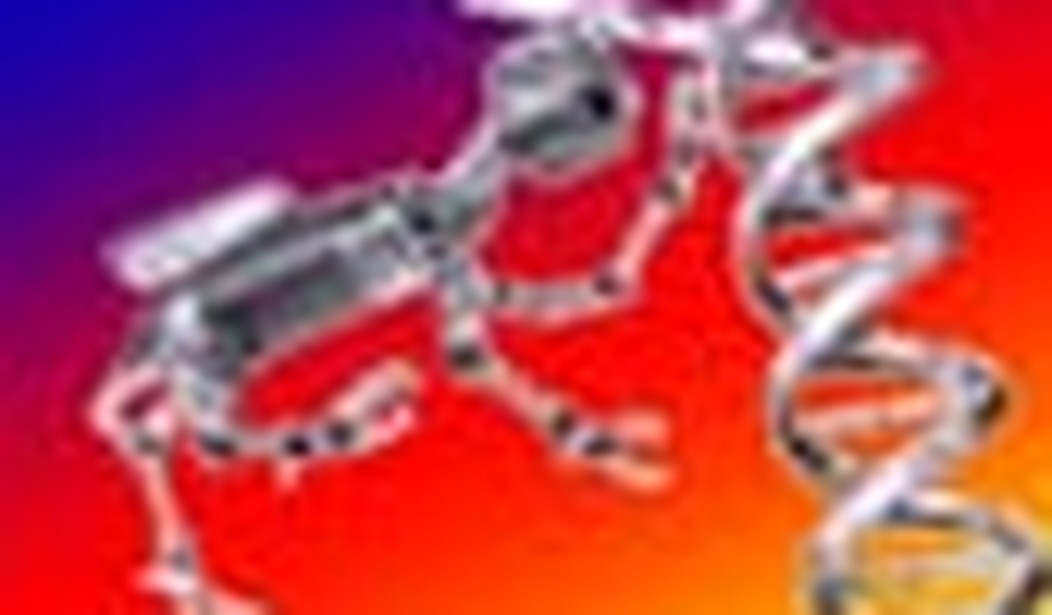“Heavier-than-air flying machines are impossible.”
Lord Kelvin, President of the Royal Society, 1895
This is one of my favorite quotes, for many reasons. I think of it every time I read news like this about a DNA nanobot being developed for drug delivery. I enjoy it because it was just about a decade ago, when I first began to write about nanotechnology, that nanobots were derisively dismissed as impossible by many leading scientists. As a result, just the fact that I gave the possibility any ink at all in commentaries at Small Times magazine and on my old nanotech blog made my life as a reporter and editor a bit more difficult.
But, keeping in mind Lord Kelvin’s quote about the impossibility of flight, when I write about nanotech I try my best not to embarrass my future great-great-grandchildren who might someday go on an archaeological dig into the caves of the early Internet to see what kind of nonsense their ancestor wrote using stone knives and bearskins.
So, I think I did OK in giving a voice to the minority opinion.
Now, in this latest experiment in DNA nanobots (we’re calling them nanosized robots because they sense and react to their environment, but more on that later), the scientists used a technique called DNA origami, which I have written about in various contexts over the years. It was actually used as a part of an art exhibit at the MOMA, with tiny happy faces made using this technique.
With this new study described in Science, “A Logic-Gated Nanorobot for Targeted Transport of Molecular Payloads,” it sounds like DNA origami is moving beyond a novelty act and is finding a path forward to true nanotech enabled drug delivery.
Over the years, I have been in touch with the inventor of DNA origami, Caltech’s Paul Rothemund, so I recently used this news to knock out a note to him to congratulate him on the continued success of this technique and to ask him how he feels about helping to create the once-impossible nanobot.
I told him that I can remember when the “conventional wisdom” was that the nanobots of our imagination were not only declared to be impossible by leading scientists at the time, but that their images in popular culture were derided as harmful to the “real” nanotech research going on.
Professor Rothemund surprised me with a lengthy answer that covered, among other things, the issue of what to call these little buggers that sense and react. It might seem like simply a semantic issue, whether or not to call them nanobots, but I think there’s more involved that gets at what captures the public imagination — a factor that cannot be discounted in whether and how the public supports its continuing development.
Here’s an edited version of what he had to say about the “nanobot” issue. As you can see, he is reluctant to give in totally to the sci-fi vision, yet recognizes the power the metaphor holds on the public:
As far as nanorobots go — cells are microrobots, with amazing nanomachines in them like the ribosome, which translates DNA genes via RNA messages into protein. Designing such systems (either ribosomes or much more complicated whole cells) is impossible for us now. But over the next century we will learn how to design such systems de novo. My guess is that DNA nanotechnology will play a large role in this. This is the broad vision, and I think fixating on nanobots, per se, is too narrow/sort of a red herring.
…
The work of Douglas et al, which they term “logic-gated nanorobots” takes us one more step along the path from the smartest drugs of today to the kind of medical nanobots we might imagine. Their DNA origami structures, which might be best likened to “programmable
clam-shells.” Inside the clamshells is a “payload.” For example in the current paper the payload was a set of antibodies that could act on the target cell. Along the edge of the clamshell were DNA aptamer “locks,” which were programmed to open only upon binding antigens presented by specific cell types. Thus the researchers could create clam-shells that would bind -only- NKL aggressive leukemia cells (and not other cells) and deliver a payload which inhibited NKL growth.Whether the structures in Douglas et al should be thought of as nanorobots is a matter of taste. Often one thinks of robots as capable of more than one different kind of motion, or as capable of repetitive motion. The “clamshells” of the current work are capable of neither of these, and they might be better thought of as “backward mousetrap” which gives up its cheese when triggered. (This seems like a crappy metaphor.)
Nevertheless the incorporation of logic into the trigger does make the structures seem more robot-like (because robots exhibit programmable motion) and the current work suggests that while we may never have medical robots which function as they do in science fiction our drugs can be much smarter than we might have imagined.
Rothemund also told me that he is grateful that the government is supporting his “field of dreams” research “based on promise alone,” although the amount is “tiny” compared to “the largely unsuccessful ‘war on cancer’ and even tinier compared to the money spent on foreign misadventures in the ‘war on terror.'”
His words are worth pondering as we discuss what the government should and should not be spending our money on. DNA origami? Yeah, I’ll buy that. For a comparatively tiny investment, DNA origami research could unfold into some wonderful breakthroughs and cures for my great-great-grandkids, who may or may not be reading this.
If they are, let me state for the record that I believe heavier-than-air flying machines are possible.










Join the conversation as a VIP Member